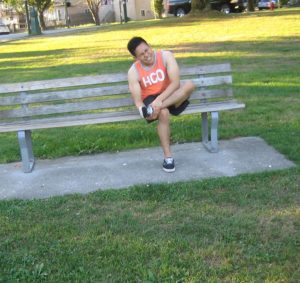Turf toe happens after performing vigorous upward bending of the big toe that results to spraining of the ligaments under the base of the big toe. Behind the joint of the big toe in the ball of the foot, there are two pea-shaped bones called sesamoids embedded in the tendon that moves the big toe. They function as a pulley for the tendon and provide leverage when walking or running. In addition, they also absorb the weight placed on the ball of the foot.
Symptoms of turf toe
- Pain can be felt at the base of the toe after an injury which depends on the extent of the ligament sprain and damage to the sesamoid bones.
- Edema is an inflammatory reaction that result to swelling, redness and tenderness of the affected area.
- A popping sound after the injury
Pain can be felt at the base of the toe after an injury which depends on the extent of the ligament sprain and damage to the sesamoid bones. - Limited range of motion of the affected joint
- Tenderness of the affected area
- Incapable of pushing off the big toe
- Bruising at the ball of the foot and at the top of the big toe
Treatment
- Apply an ice pack on the affected area for at least 10 minutes to lessen the pain and swelling and for fast healing of the condition. Avoid applying the pack directly on the skin to prevent further damage to the area.
- Apply a compression bandage after the injury for at least 10 minutes at a time to support and protect the toe and lessen the swelling. Avoid applying compression for more than 10 minutes to prevent reduced flow of blood to the tissues that can result to further damage.
- Elevate the affected toe above the level of the heart to drain fluid, lymph, excess blood and lessen the pain.
- Wear a walking boot for the first 2 weeks after the injury for proper healing of the condition.
- Use an arch support to lessen the pressure placed on the joint of the big toe.
- Rest the affected area by using a brace to protect the toe, prevent unnecessary movement and for fast healing of the condition. Another option is taping the turf toe to the toe next to it to prevent it from bending in the direction that can strain the ligament of the toe and cause pain.
- Take the prescribed over-the-counter pain medications such as ibuprofen to lessen the pain and inflammation.
- When pain subsides, seek the help of the physical therapist for some rehabilitation exercises to restore the range of motion, strength and conditioning of the injured toe.
Tips
- Runners should regularly change their running shoes every 500 miles.
- Perform training activities on grassy and cushioned surfaces. Avoid hard surfaces.
- Wear shoes that fit properly and soles that properly protect the base of the big toe.
Disclaimer / More Information
The material posted on this page on a turf toe is for learning purposes only. Learn to recognize and manage joint and muscle injuries including a turf toe by taking a first aid and CPR class with one of our training providers.
FACT CHECK
https://www.foothealthfacts.org/conditions/turf-toe
https://www.webmd.com/fitness-exercise/turf-toe-symptoms-causes-and-treatments#1

